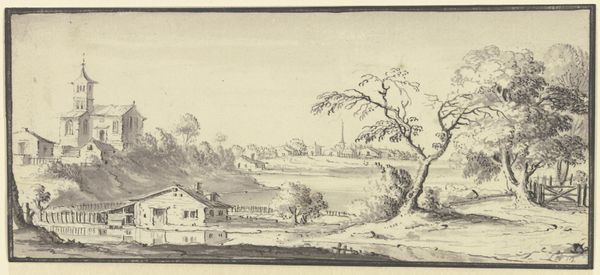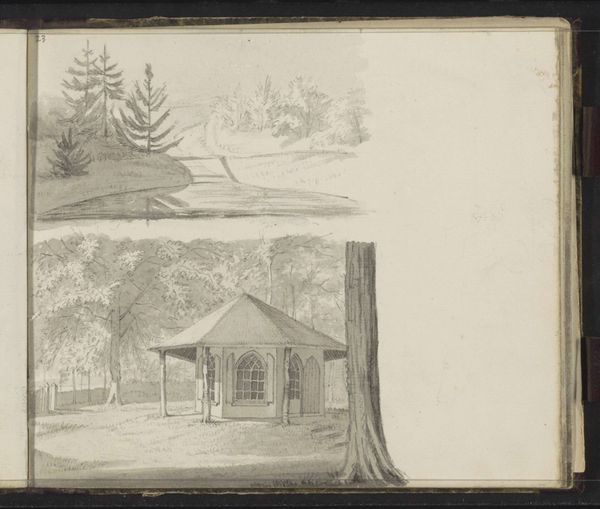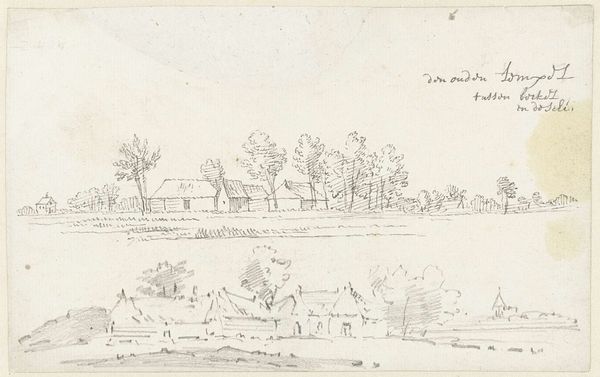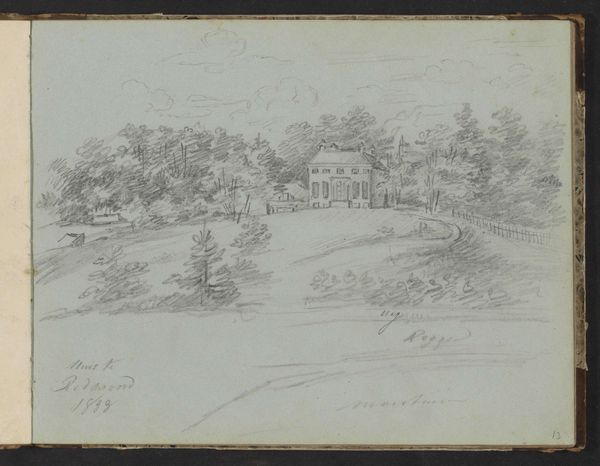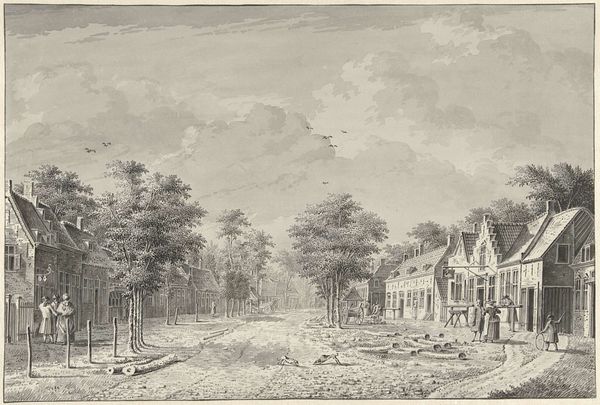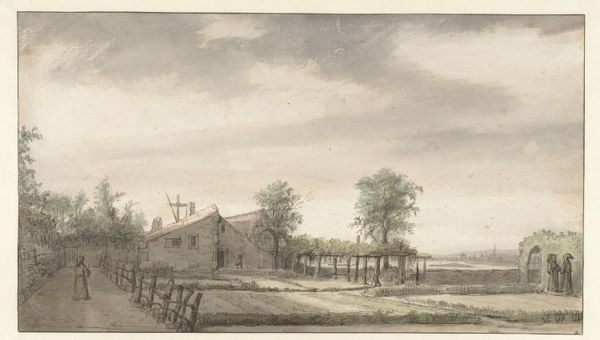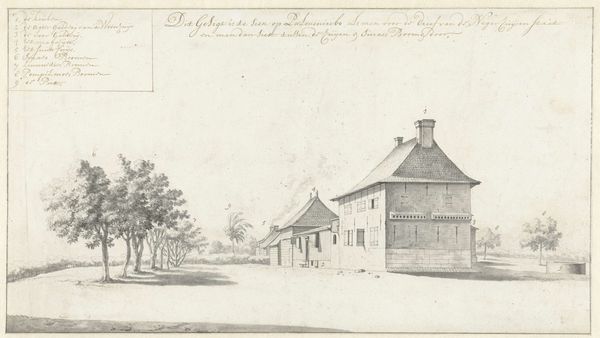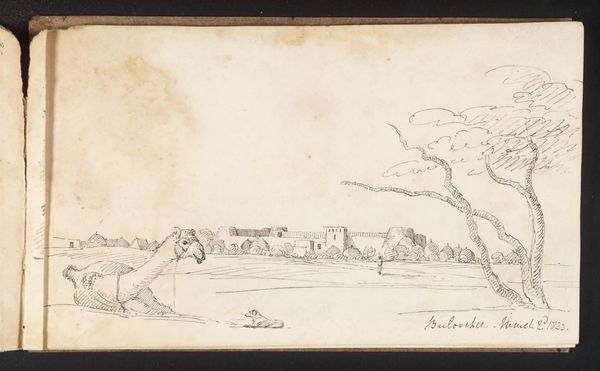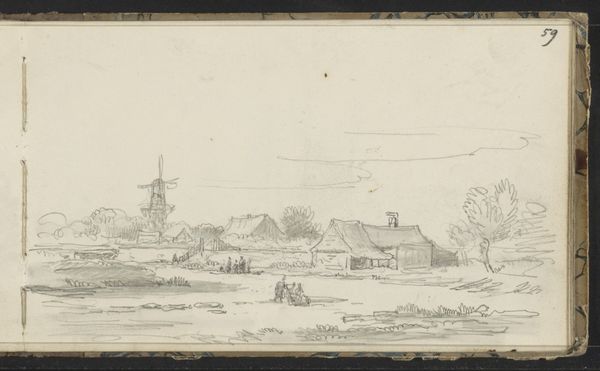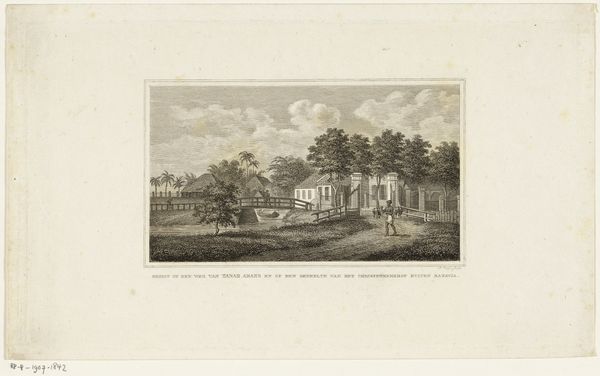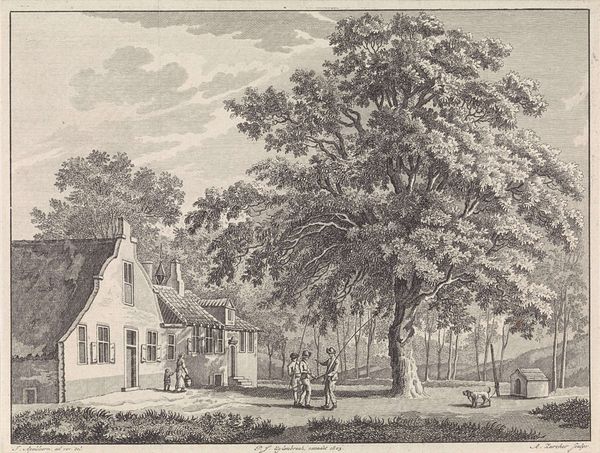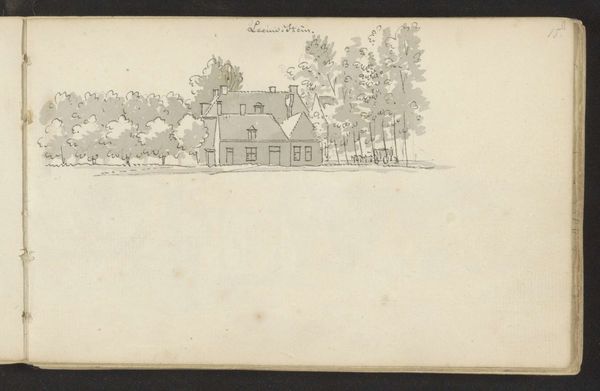
drawing, paper, ink, pen
#
drawing
#
aged paper
#
toned paper
#
pen sketch
#
sketch book
#
landscape
#
paper
#
personal sketchbook
#
ink
#
pen-ink sketch
#
pen work
#
pen
#
watercolour illustration
#
genre-painting
#
pencil art
#
watercolor
Copyright: Rijks Museum: Open Domain
Curator: I find the sketch-like quality immediately charming. It's an intimate look at rural life. Editor: Indeed! What we're viewing here is a drawing by Hendrik Abraham Klinkhamer, titled "Boerderij en een landschap"—which translates to "Farmhouse and a Landscape." Executed sometime between 1820 and 1872, this ink and watercolor work on paper resides in the Rijksmuseum's collection. Curator: The thatched roof on the main house practically radiates warmth. The composition, split into these two distinct landscape vignettes, creates a dual narrative. Editor: Precisely. Consider how these depictions, while seemingly straightforward, offer a lens onto 19th-century Dutch society’s view of agrarian life. There is this idyllic image, and its proliferation serves a purpose of national identity, but the lives behind the farms themselves were not always so comfortable. Curator: That makes me think about the buildings themselves as symbols—the farmhouse, of course, speaks to hearth and home. Then we see that the barn also has great significance; without it, how can crops and equipment be managed to sustain their livelihoods? They signify labour, industry, continuity... Editor: And beyond its thematic components, observe Klinkhamer's delicate linework, which creates subtle tonal variations. It really elevates a simple sketch into something more expressive. It makes one think about the social and artistic values of the day—think of the prevailing interest in landscape that connects to the burgeoning romantic movement. Curator: Absolutely. And this sketchbook format enhances the feeling of authenticity. One can sense him observing directly, distilling the essence of the landscape. Editor: Which prompts a wider consideration; How did artworks such as this help build visual language around nationhood? It played no small part in solidifying ideas and understandings about Dutch identity. Curator: The memory held in simple scenes… it really highlights the potency of those familiar, domestic symbols. Editor: Indeed, it's quite revealing how art intertwines with cultural ideology. Curator: It adds another layer to appreciate. Thanks for illuminating.
Comments
No comments
Be the first to comment and join the conversation on the ultimate creative platform.
